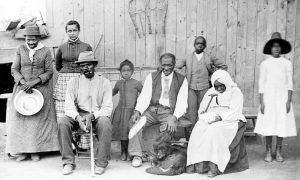Imagine a song so innovative that it rivaled one of The Beatles’ most popular song of their career “Yesterday.” In an era dominated by rock and roll, with hits by bands like the Beach Boys and The Beatles controlling the charts, the genre of bossa nova made its impact in 1964 when the international sensation “The Girl from Ipanema” found itself being played all over America. The song had been originally performed in Portuguese in 1962, and has since had more than 500 different recordings from around the world. It currently remains one of the world’s most widely aired songs.1

Antonio Carlos “Tom” Jobim is credited with creating many jazz standards through his creative contributions to the genre. Tom Jobim had a well-rounded education in music. He began piano lessons at the age of fourteen from a local musical scholar in Rio de Janeiro. He later gained more experience and strengthened his musical talent by playing in nightclubs and studying jazz bands and orchestras. In 1956, Jobim met Vinicius de Moraes who gave Jobim the opportunity to achieve his first big hit.2 Jobim kicked off a new musical craze by composing music for the play Orfeu da Conceição (Orpheus of the Conception). Though Jobim’s score for the play was based on samba rhythms, like much of his other works, it included harmonic shadings from jazz as well. This combination resulted in the new genre bossa nova, meaning “new wave.” After the play had its one month run, the two got together to create the song “Chega de Saudade,” which translates to “No More Blues.” Jobim claimed that the song had samba-canção style. Samba-canção was a refined style of samba that emphasized the melody rather than rhythm. João Gilberto, a talented singer who would later be widely known for his own bossa nova works, joined Jobim and de Moraes to create one of the genre’s first recordings.3 The song “Chega de Saudade” became the first hit of this new genre in 1958, sang by João Gilberto and written by Vinicius de Moraes and Tom Jobim.4

1962 was a year packed with successes for the genre of bossa nova. The one and only original “The Girl from Ipanema” was written, and would soon be an instant success. All while another artist by the name of Stan Getz would begin to dabble in the genre as he released albums like Focus and Jazz Samba.9 Stan Getz, an American jazz saxophonist, was first introduced to bossa nova through a friend and fellow jazz artist Charlie Byrd. In 1961, Byrd had just returned from a program that the United States State Department hosted that sponsored American artists to tour around the world in hopes of allowing the spread of cultures and music.10 Byrd and Getz combined in 1962 to produce an album based on the sounds Byrd had heard on his State Department trip to Brazil. The resulting album, Jazz Samba, was instrumental in making bossa nova popular with American audiences in 1963. It also featured some of Gilberto’s songs.
Jobim made his way to New York City just as the bossa nova craze in Brazil was beginning to die down. Gilberto then joined Jobim in New York in early 1963. Getz sought out Gilberto and Jobim to collaborate in recording some songs together in the bossa nova style. That March, they went into a studio with music producer Creed Taylor to record eight songs.11
These eight songs became part of one of the most famous jazz albums of all time: Getz/Gilberto. On this album was the most famous rendition of the song “Garota de Ipanema,” this time featuring the wife of Gilberto, Astrud, as the vocalist. As the group recorded the song, Taylor suggested adding an English verse to the song, in addition to the Portuguese verse sung by Gilberto. Since Astrud knew English better than her husband, they decided that she should sing it, although she had never had any professional experience singing or recording.12
The album that resulted from their recording sessions that March was a fusion of the bossa nova style with Getz’s jazz saxophone. The album, when released in March 1964, was a huge success and was subsequently awarded three Grammy Awards. In fact, the album Getz/Gilberto became the best selling jazz LP in history, up to that time. “The Girl from Ipanema,” however, was released later that year of its recording, in 1963, as a single with João’s verse cut out, featuring only Astrud’s English contribution to the song. The original version of the recording, with both English and Portuguese verses, was retained for the album, but because it was over five minutes in length, Taylor felt that it was too long for radio stations to play it. So American listeners first heard the English-only version by Astrud, which went on to win a Grammy for Best Song in 1964.13 Despite the international successes of the genre and its songs, bossa nova’s popularity in Brazil was short-lived, due to Brazil’s dramatically changing political climate.


The song that began on a Brazilian jazz album being sung in Portuguese by a man, and ended as a pop single around the world being sung in English by a woman changed the world of jazz and music. Although the rise of military dictatorship in Brazil caused bossa nova’s romantic and optimistic lyrics quickly lose their relevance, “The Girl from Ipanema” remains an international sensation.21
- Suzel Ana Reily, “Tom Jobim and the Bossa Nova Era,” Popular Music 15, no. 1 (1996): 2. ↵
- Salem Press Biographical Encyclopedia, 2015, s.v. “Antonio Carlos Jobim,” by Matthew Nicholl. ↵
- Encyclopedia of Great Popular Song Recordings, 2013, s.v. “Chega de Saudade (1958)—Joao Gilberto (music by Antonio Carlos Jobim, lyrics by Vinicius de Moraes) Festa 6002,” by Steve Sullivan. ↵
- Encyclopedia of World Biography, 2007, s.v. “Jobim, Antonio Carlos,” by Tracie Ratiner. ↵
- Latin Music: Musicians, Genres, and Themes, 2014, s.v. “Bossa Nova,” by Robert Willey. ↵
- Suzel Ana Reily, “Tom Jobim and the Bossa Nova Era, ”Popular Music 15, no. 1 (1996): 8. ↵
- Brazil Today: An Encyclopedia of Life in the Republic, 2012, “Bossa Nova,” by John J. Crocitti and Monique M. Vallance. ↵
- Suzel Ana Reily, “Tom Jobim and the Bossa Nova Era, ”Popular Music 15, no. 1 (1996): 8. ↵
- Baker’s Biographical Dictionary of Musicians, 2001, s.v. “Getz, Stan(ley),” by Nicolas Slonimsky and Laura Kuhn. ↵
- Salem Press Biographical Encyclopedia, 2015, s.v. “Antonio Carlos Jobim,” by Matthew Nicholl. ↵
- Contemporary Musicians, 2004, s.v. “Gilberto, Astrud,” by Carol Brenna. ↵
- Bill DeMain, “The Girl From Ipanema,” Performing Songwriter 14 (1998): 88. ↵
- Salem Press Biographical Encyclopedia, 2015, s.v. “Antonio Carlos Jobim,” by Matthew Nicholl. ↵
- Frederick Moehn, “Music, Citizenship, and Violence in Postdictatorship Brazil,” Latin American Music Review / Revista de Musica Latinoamericana, no. 2: 181. ↵
- Worldmark Encyclopedia of the Nations, 2004, s.v. “Brazil.” ↵
- Latin Music: Musicians, Genres, and Themes, 2014, s.v. “Bossa Nova,” by Robert Willey. ↵
- Suzel Ana Reily, “Tom Jobim and the Bossa Nova Era,” Popular Music 15, no. 1 (1996): 4. ↵
- Nelson Barros da Costa and Maria das Dores Nogueira Mendes, “A Bossa Nova e a Música Cearense Dos Anos 70 / The Bossa Nova Movement and the Music of Ceará of the 1970s,” Per Musi, no. 29 (2014): 176. ↵
- Stephen Buckley, “FOREIGN JOURNAL; Then, Now and Forever, ‘The Girl From Ipanema,” The Washington Post, October 18, 1999. Accessed December 1, 2018. https://advance-lexis-com.blume.stmarytx.edu/api/document?collection=news&id=urn:contentItem:3XNG-P1D0-00RP-M4TH-00000-00&context=1516831. ↵
- Latin Music: Musicians, Genres, and Themes, 2014, s.v. “Bossa Nova,” by Robert Willey. ↵
- David Chater, “Critic’s choice; The Girl from Ipanema Monday 1,” The Times (London). (July 2016). ↵



58 comments
Gabriella Parra
Such a beautiful song with so much history! It’s kind of tragic how Brazilians couldn’t enjoy bossa nova due to their political climate. This fact really illustrates the state of the country and it’s people at the time. It’s always interesting to discover how emerging genres are so different from the genres that came before. I’m inspired to look at the historical context of my favorite songs.
Monserrat Garcia
Such an interesting and informative article! The Girl from Ipanema has been one of my favorite songs for years and I had never known about its backstory of the category it falls under. The explanation about Samba and the effect that music has on brazileneans is so intricate. In the United States, we listen to music to free our souls and just relax and enjoy the moment but in Brazil, as the author described, they either use it to inspire a revolution or escape from their misfortune.
Sara Alvirde
I love samba and bossa nova music so much it was so nice and interesting to read this article talking about the origin of the music and how one of the most famous bossa nova songs became famous in America. I love to listen to that song but when Stan Getz and Joao Gilberti sing it. It’s such a wonderful and funny song when you read the lyrics.
Maria Moreno
One listens to a song and doesn’t realize all the history and background that comes with it. Jazz has always been a favorite for me, its not only relaxing to listen to but the lyrics express so much. I found this article very interesting and informative, I didn’t know how many inspirational styles went into this song. No wonder this song was such a hit back then that it was even a rival to big stars like the beetles.
Hailey Lechuga
It was fascinating to read about not only one of my favorite jazz genres, the bossa nova, but also about the story and impact of The Girl from Ipanema! I had never known much about the origin, being that this style came from samba which was created by African slaves. It is incredible to observe the human ability to express emotion through the means of music, and it is definitely unfortunate that the political atmosphere of Brazil played a huge part in this. Nonetheless, these remarkable musicians truly made a huge influence in the world of jazz.
Eric Hernandez
I found this article to be very interesting because it gave a whole the story behind the famous song The Girl from Impanema. The reasoning behind the name of the song is so mind boggling to me just for the fact that had that lady not had been at the beach, the song might have not been created. In this case, this dong shows how much publicity it has brought to the jazz genre of music.
Tavion Varela
I have heard this song countless times but I have never known about its background. I think learning more about the song and how it came about gives you a better understanding and appreciation of it. The jazzy, soothing music was such a hit in the 60’s so it is not surprising that it had an influence on the Beatles in some way. I also did not know anything of the genre Samba but it was very interesting to learn about it in this article.
Diego Oviedo
This is the first time that I have heard of this song. The background of the every song is intriguing because the meaning is always something from the heart that is incomparable. I like how the article brings up Tom being the creator of a samba because if one knows how to dance it then it makes it ever the more wild. Bossa Nova has most of the time been played in my household and it it always uplifting and brings the vibes up especially when my family members go to my house.
Sophia Rodriguez
Bossa nova is so unique to jazz language. It is both calming and a laid back style of music. The Girl from Ipanema is a jazz standard for rising musicians and jazz artists. As a trumpet player I remember learning this song. I have heard so many different artists sing this song and perform it. I did not know Jobim was a part of making this song along with Gilberto; and, I was not aware that they wrote many songs together.
Kayla Mendez
Although I don’t know too much about music, let alone jazz, I enjoyed the amount of information provided in this article about “boss nova”. The author’s decision to relate the music genre to its origin time period helped me understand the genre’s “atmosphere”. Knowing that people in Brazil played “bossa nova” music during happy times, when they felt hopeful, helps me envision the type of emotions it emits. The fact that Brazil returned to the genre only when it felt right, expresses the connection “bossa nova” has to its people. It was quite beautiful to read.